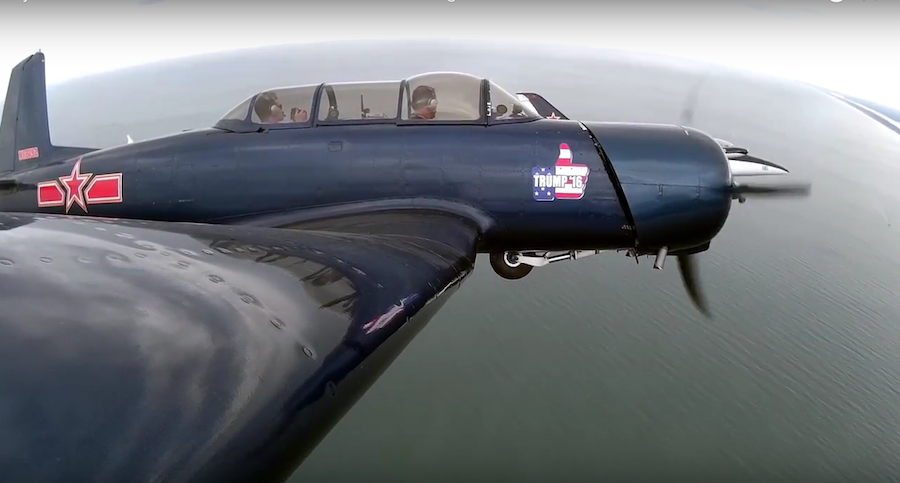From the Cockpit Part 10: Nanchang CJ-6
Todays News
SRQ DAILY FRESHLY SQUEEZED CONTENT EVERY MORNING
THURSDAY MAR 9, 2017 |
BY PHILIP LEDERER
Pictured: Ryan Rankin (left) and Hank Gibson fly the Nanchang CJ-6. Photo courtesy of Ryan Rankin.
Editor’s Note: This is part ten of an ongoing series documenting the flights of active-duty US Navy Pilot Ryan Rankin on his journey to fly 52 planes in 52 weeks through the year 2017.
Flying out of Flager Beach, FL, Rankin finds himself behind the controls of a Nanchang CJ-6, an aircraft of Chinese design and manufacture first introduced in 1958. Alongside is the aircraft’s owner, Hank Gibson, a former Navy pilot. They’ll only be up there for about 40 minutes or so, but the Nanchang can be tricky.
Pleasing to the eye, the Nanchang sports a symmetrically satisfying radial engine out front. Big, heavy, round and prevalent in the World War II era, this old-style piston engine and its sputtering explosions has largely been replaced by sleek jet engines and turbines, but are not altogether gone. “They’re still used today,” says Rankin, “but it’s more a vintage thing.” And it’s nothing Rankin hasn’t seen before.
The Nanchang offers other surprises, however, such as a pneumatic system within the craft to control landing gear, brakes and similar mechanical functions. Most American and European designs use compressed fluid in a hydraulic system. Charged by the engine, the pneumatic system of the Nanchang uses compressed air instead, something Rankin found out when the plane started hissing on the runway. “Very neat,” he says. “It has a very mechanical, steampunk feel to it.”
But the tricky part doesn’t come from the radial engine and it doesn’t come from the pneumatics. It doesn’t even come from the instrument readouts measuring in different units than Rankin is used to. The real trick in piloting a Nanchang after flying American planes for years is that the propeller spins in the opposite direction. It fulfills the same function, but reverses what is called the p-factor—when the rotation of the propeller on the body of the plane pulls the nose in a certain direction. Pilots compensate by manipulating the right or left rudder as they increase power to the propeller. It becomes instinct and second nature, but is dependent on which direction the propeller spins. “You pick it up,” Rankin says, “but it takes some time.”
Beyond that, in the cockpit the Nanchang has a stick, a throttle and rudder control. “And that’s a language I speak,” says Rankin. The same principles of flight apply, it’s just a matter of adjusting to the particulars. Taking the training craft for some light aerobatics and shooting the breeze with Gibson about Navy days, the only additional peccadillo is a bit of a heavy nose that requires some extra elevation coming out of maneuvers.
For more about the flight in Rankin’s own words and a video of the flight, follow the link below.
Pictured: Ryan Rankin (left) and Hank Gibson fly the Nanchang CJ-6. Photo courtesy of Ryan Rankin.
« View The Thursday Mar 9, 2017 SRQ Daily Edition
« Back To SRQ Daily Archive











